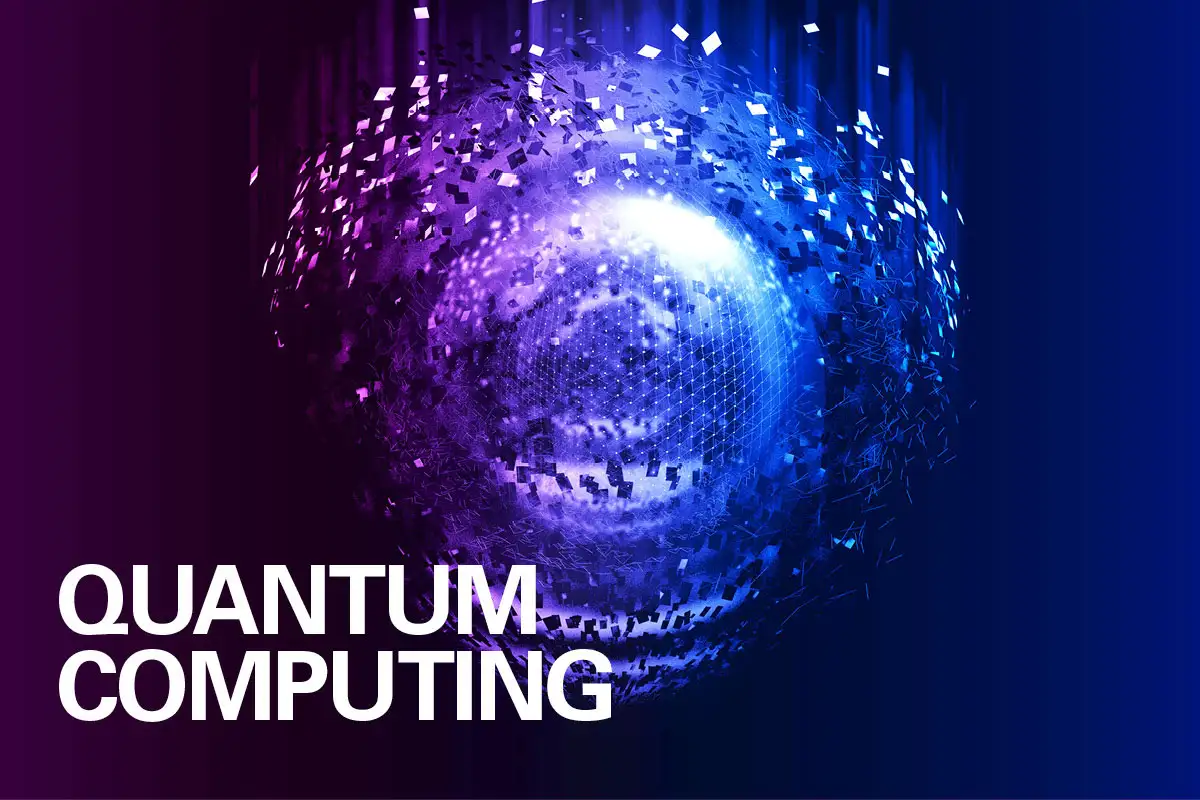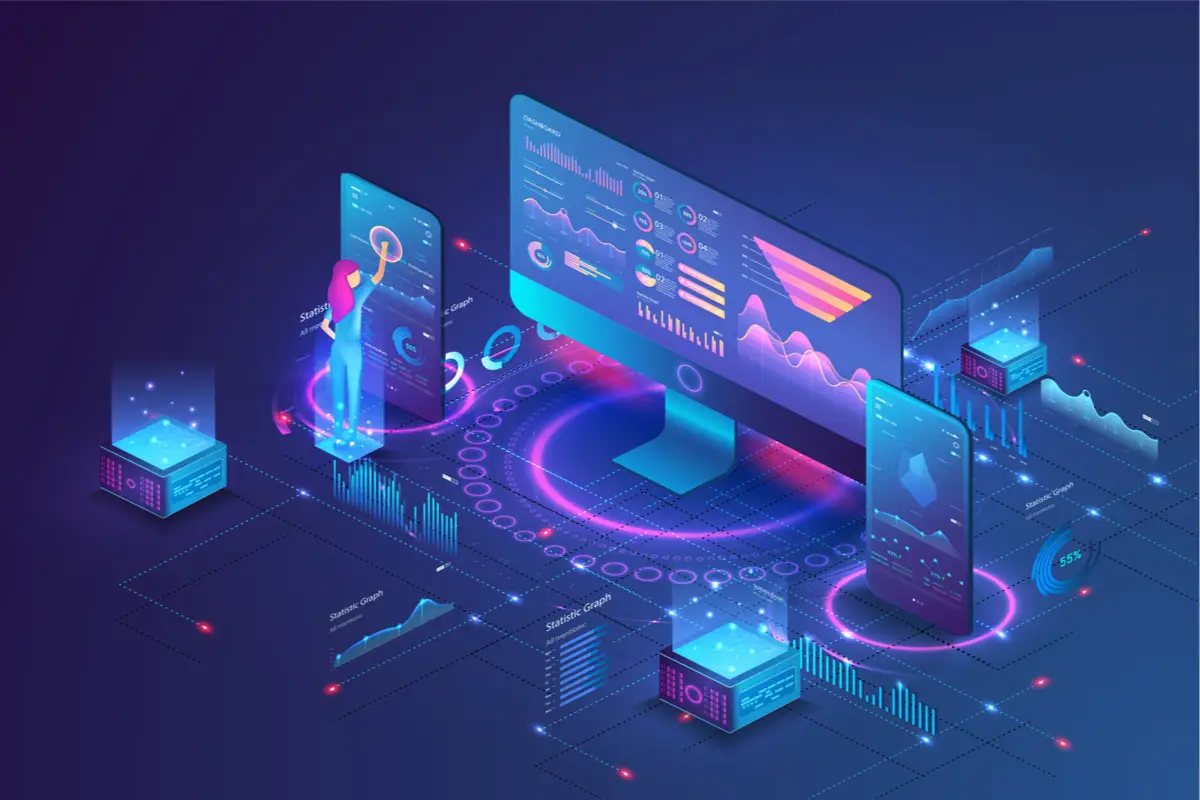Do you know the 11 Best Practices for Quantum Computing in 2023? Quantum computing has been a buzzword for the past few years, and it’s only expected to become more ubiquitous in the coming years. As we enter a new era of computing, developers, and businesses need to understand the best practices for working with this new technology.
The potential of quantum computing is huge. It could be used to develop more powerful algorithms, optimize worldwide logistics, and even help us solve some of science’s biggest mysteries. But companies looking to utilize quantum computers need to understand how to do so safely and securely.
In this article, I’ll offer 11 best practices that any business should consider when implementing quantum computing in 2023. With these tips in mind, you’ll be able to use quantum computers safely and efficiently—and realize their incredible potential.
Read More: Latest Advantage of Ethical Technology in 2023?
Explore the Contents
- 1 Understanding the Basics of Quantum Computing
- 2 Applying Superposition to Algorithmic Complexity
- 3 Leveraging Quantum Simulations for Research and Development
- 4 Optimizing Computing Resources With Quantum Computing
- 5 Securing Data via Quantum Cryptography
- 6 Utilizing Entanglement for Improved Network Performance
- 7 Exploiting Interference Phenomena
- 8 Utilizing Machine Learning Techniques in Quantum Computing
- 9 Assessing the Value of Different Types of Problems for Quantum Computing
- 10 Developing Efficient Error-Correction Protocols
- 11 Finding Skilled Professionals to Execute Quantum Computing Projects
- 12 Conclusion
Understanding the Basics of Quantum Computing

Quantum computing is a powerful and complex way of processing and storing data. With this technology, massive amounts of data can be processed at once, allowing for faster, more efficient problem-solving and decision-making processes. But what exactly is quantum computing and how does it work?
Put simply, quantum computing leverages the power of subatomic particles to solve complex problems that traditional computers struggle with. By manipulating these particles, quantum computers can process large amounts of data in a fraction of the time it takes a regular computer.
Moreover, quantum computing offers advantages that traditional computers do not – such as allowing for parallel processing of data (allowing multiple computations to run at the same time), superpositioning (in which multiple states can exist at once), and entanglement (the ability to transmit information over vast distances).
These powerful processing capabilities offer a whole new world of possibilities for problem-solving and machine-learning applications. If you want to stay ahead in the world of tech in 2023, understanding the basics of quantum computing is essential.
Applying Superposition to Algorithmic Complexity
If you’re looking to take advantage of the power of quantum computing, you’ll need to understand how to apply superposition and entanglement concepts to your algorithms. Superposition is the ability of a qubit (the basic unit of quantum information) to exist in multiple states at the same time. Through superposition, a qubit can simultaneously represent many possibilities, allowing algorithms to consider many options in parallel.
On the other hand, entanglement is based on the principle that two qubits can influence each other instantaneously – even if they’re separated by great distances – allowing algorithms to perform complex calculations and operations on fewer physical resources. This potentially reduces the complexity of an algorithm while allowing it to run more quickly and efficiently than traditional computing systems.
By leveraging both superposition and entanglement in your algorithms, you can realize significant performance gains and reduce algorithmic complexity. This will be essential for unlocking the potential of quantum computing in 2023 and beyond.
Leveraging Quantum Simulations for Research and Development
When it comes to leveraging quantum simulations for research and development, there are a few best practices you can follow.
First, you should take advantage of the unique tools and services available from specialized consultancies such as those offered by Quantum Computing Inc., which specialize in helping companies with their quantum computing efforts. By leveraging the expertise of consultants, you can quickly gain access to the vast array of resources needed for successful quantum computing projects.
Second, you should also consider investing in specialized software that can help simulate complex quantum systems. For example, QUANTUM Studio is a popular program that provides intuitive visualizations of quantum systems and helps users develop algorithms tailored to their specific needs.
Finally, by employing strategies such as coupling classical modeling with advanced machine learning techniques, it is possible to gain insights into various aspects of quantum simulation more quickly and accurately than ever before. Additionally, utilizing cloud-based services and powerful hardware such as GPUs can dramatically speed up the process of executing large-scale simulations.
Optimizing Computing Resources With Quantum Computing
Did you know that quantum computing can drastically reduce the number of gates, time steps, and quantum resources needed for a given computing task? It’s true! That’s why quantum computing is being used to optimize energy systems and resources around the world.
When you’re optimizing resources, you can make use of quantum computing in a few ways:
Reducing Complexity
By reducing the complexity of a system, you can use fewer gates and reduce time steps. This means that you can get more done faster with fewer resources.
Decreasing Time Steps
Quantum computers can help reduce the time it takes to complete a task by processing data faster than traditional computers. This means you can take advantage of simultaneous operations to quickly complete tasks.
Maximizing Outputs With Quantum Resources
Traditional computers are limited in the number of resources they can process at once, but quantum computers can take advantage of qubits—the basic unit of a quantum computer—to process different tasks concurrently, allowing for more efficient use of resources and increased outputs.
Securing Data via Quantum Cryptography
Data security is a must-have for any modern business, and one of the best practices you can use in quantum computing is the use of quantum cryptography. With quantum cryptography, key data is encoded using complex mathematical principles, making it very difficult to tamper with or intercept without detection.
This method also offers superior protection against hacking attacks and cybercriminal activity, because instead of relying on passwords or encryption methods that could be easily cracked, quantum cryptography uses the principles of quantum mechanics to make sure data stays secure.
Here’s a quick rundown of how quantum cryptography works:
- Quantum states are used to generate keys for different types of encryption algorithms.
- The encryption keys are made up of binary bits (qubits) that can be randomly flipped by adversaries due to their inherent instability.
- The sender and receiver both have access to these unstable qubits which are then used to authenticate messages and data exchanges between them.
- If an adversary tries to intercept the message or data, they will cause the qubits to change, which will then alert the receiver that their message has not been received in its original form.
- The receiver then sends over another encrypted message using new qubits which replace the old one, ensuring that all exchanges remain secure throughout the process.
Using quantum cryptography makes sure that your data never falls into malicious hands; plus it helps build trust between you and your customers since they know that their sensitive information remains safe within your systems.
Utilizing Entanglement for Improved Network Performance

A key best practice for quantum computing in 2023 is to leverage entanglement for improved network performance. Quantum entanglement is when two or more particles interact with one another and become inextricably linked, even in distance. This means that changes to one particle’s state cause changes to the other particles, regardless of the distance between them.
The entanglement phenomenon has been used to link qubits together, providing fast and secure communication. Quantum entanglement can offer cross-state communication without the need to send messages—as soon as a qubit is changed, every entangled qubit changes as well, which can reduce latency and increase the speed of information transmission between networks.
By utilizing quantum entanglement for network performance, 2023 will see a revolution in data transmission speeds. Here are some of the top benefits this technology offers:
- Entangled qubits experience less latency in communication within the same state or between different states
- Significantly faster communication speeds due to reduced latency
- Secure communication with virtually uncheckable security measures due to the “no-cloning theorem”
- Reduced power consumption
Exploiting Interference Phenomena
You should also be aware of exploiting interference phenomena when using quantum computing. It’s an incredibly powerful tool, as interference can be used to generate highly precise solutions to problems with high accuracy.
Interference is a physical phenomenon whereby two or more waves interact which each other when they meet, causing the amplitude (or peak height) of the wave to increase or decrease. In a quantum computing context, this means that two or more operations affecting the same qubit can interfere with each other, leading to an expected outcome that may not be easy to predict.
So what are some best practices for exploiting interference phenomena in quantum computing?
- Make sure that you understand the context in which you are operating—magnitudes, probabilities, and potential consequences all need to be taken into account
- Create and adjust your quantum algorithm tests accordingly, balancing interference effects and desired outcomes
- Use a variety of different strategies—quantum walks, Grover’s algorithm, and more—to optimize your results and reduce noise levels
- Be mindful of noise levels when selecting solutions, as high noise levels can cause unexpected errors
- Take advantage of entanglement and superposition effects for even better results
Utilizing Machine Learning Techniques in Quantum Computing

This might sound like the stuff of science fiction, but the reality is that machine learning techniques can play a key role in developing quantum computing solutions.
While these techniques may seem complex, they are an effective way to accelerate the development and deployment of quantum computing technologies. Here are a few tips for getting started:
- Identify which types of problems can benefit from quantum computing and develop an appropriate strategy to solve them.
- Utilize machine learning algorithms that can be trained to recognize patterns and optimize results.
- Seek out software platforms that provide easy access to quantum computing programming environments and tools.
- Utilize a variety of data sets in the training process to maximize accuracy and performance with the existing infrastructure.
- Embrace open source projects and code repositories, as well as “quantum-aware” development frameworks, to expedite design cycles and ensure quality results when deploying solutions on real hardware or emulation platforms.
- Monitor changes in technology and performance metrics while actively testing new approaches to achieve competitive advantage over competitors using traditional software development methods.
- Invest in research and development (R&D) teams skilled in both classical computer science as well as quantum computing principles for improved cross-disciplinary collaboration and more efficient solutions delivery across the board.
- Leverage existing datasets for testing purposes — this will provide data points for benchmark comparisons so you can more easily identify areas where improvements could be made to better optimize results with your system deployments later on down the road should you choose to pursue this avenue further down the line of exploration.
Assessing the Value of Different Types of Problems for Quantum Computing
When it comes to quantum computing, not all problems are created equal. Many types of problems can benefit from using a quantum computer, and each one should be assessed on its own merits before deciding to move forward.
Let’s look at some of the advantages of using quantum computing for certain types of problems:
Machine Learning
Quantum computing can allow for more accurate machine-learning models by reducing the amount of time and energy needed to train them. This can open up doorways to even more powerful AI capabilities that could help solve complex problems faster and more accurately.
Chemistry Simulation
Quantum computers can simulate complex chemical reactions, which could result in new advancements in areas like drug discovery and material science.
Optimization Problems
Quantum algorithms have been designed to solve complex optimization problems with greater accuracy than traditional methods. This could be used for a variety of applications, including autonomous vehicles and scheduling algorithms.
By assessing the value of different types of problems for quantum computing, businesses, and organizations can make an informed decision about whether or not this technology is right for them and their specific needs.
Developing Efficient Error-Correction Protocols
Creating secure qubits is all about developing efficient error-correction protocols. Every qubit needs to be in a superposition and remain stable for as long as possible, which is why we’re investing in researching ways to make them secure.
At the moment, we’re striving to create protocols that can identify and correct potential errors during operation, like a firewall for the code. Plus, we’re also working on ways for detecting any erroneous information that may have already occurred.
Here are some of the current strategies being used today:
- Fault Tolerant Error Correction: This involves utilizing codewords to detect and correct errors at the hardware level by running multiple iterations of an algorithm until a true answer has been reached.
- Classical Algorithms: This technique generally involves using classical algorithms, such as Grover’s algorithm or Shor’s algorithm, to solve problems on top of an underlying quantum system—which can then be analyzed and validated using results from the quantum system itself.
- Quantum Computing with DNA: By using DNA strands as qubits, researchers can create hybrid systems that combine classical computing techniques with quantum computing techniques to gain more efficient error correction capabilities.
These strategies are helping pave the way for reliable qubit handling and implementation across all areas of quantum computing—and with each breakthrough, we’re getting closer to making reliable applications that don’t suffer from data loss or corruption due to faulty qubits or error-prone operations!
Read More: Latest Insurtech and Fintech Market Growth in 2023
Finding Skilled Professionals to Execute Quantum Computing Projects

Finding people to fill the talent gap when it comes to quantum computing projects is essential if you want your project to be successful. But given the fact that quantum computing is a fairly new technology and there is a lack of qualified professionals in the field, this can be challenging.
That’s why it’s important to prioritize hiring people who have experience with relevant technologies. Look for candidates with experience in fields such as mathematics, computer science, physics, engineering, and other related disciplines.
You should also take care to conduct rigorous technical interviews and use specialized tools like coding challenges, technical exams, and analytical interviews to evaluate their skill sets accurately. Try out different methods of assessment before you make any hiring decisions, as this will give you more options for finding the best fit for your team. Additionally, consider utilizing network resources like conferences and job boards for networking purposes.
These strategies can help you find skilled professionals who can bring their unique knowledge and expertise to your quantum computing project.
Conclusion
In summary, the 11 best practices for quantum computing in 2023 focused heavily on staying ahead of the curve. As technology continues to evolve and become more accessible, it’s important to stay informed on the latest advancements in the industry and understand how they can be applied to your field. By gaining a thorough knowledge of quantum computing, businesses can maximize its potential and benefit from its applications in the years to come. Now is the time to prepare for the future of quantum computing and make sure your business is at the forefront of this revolution.



